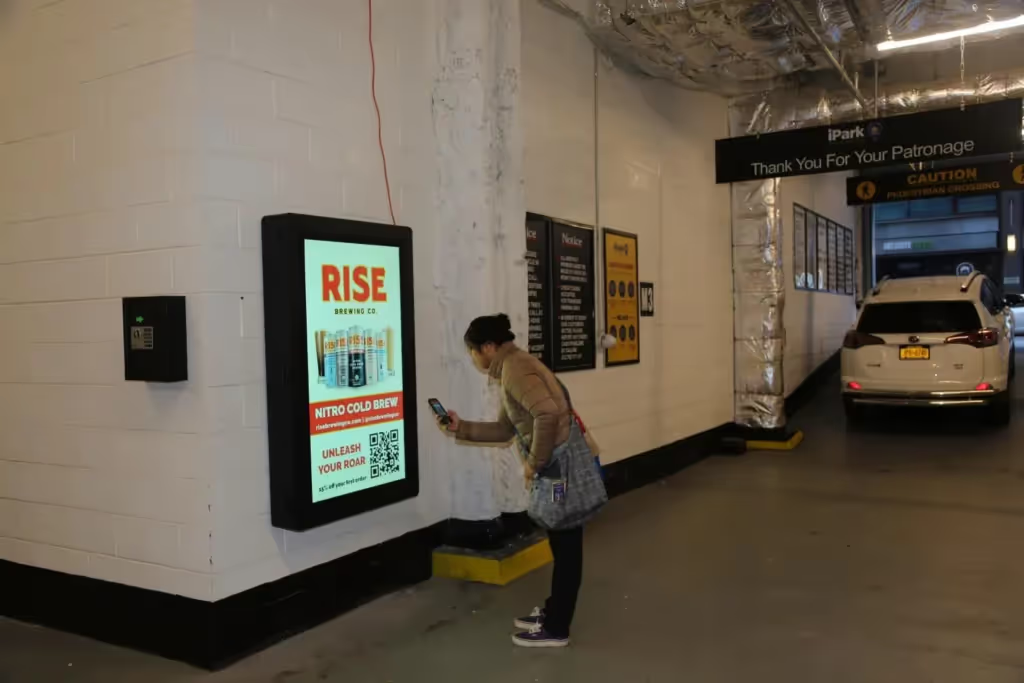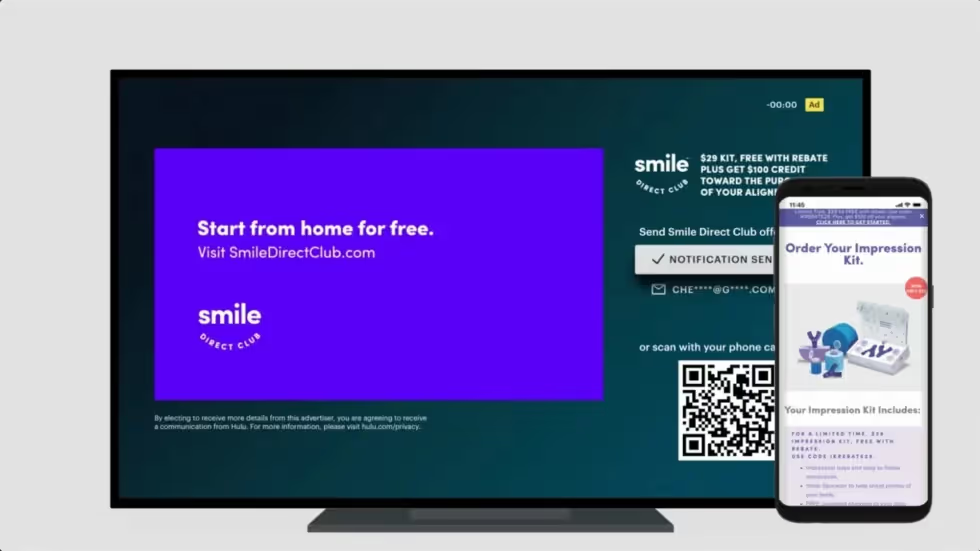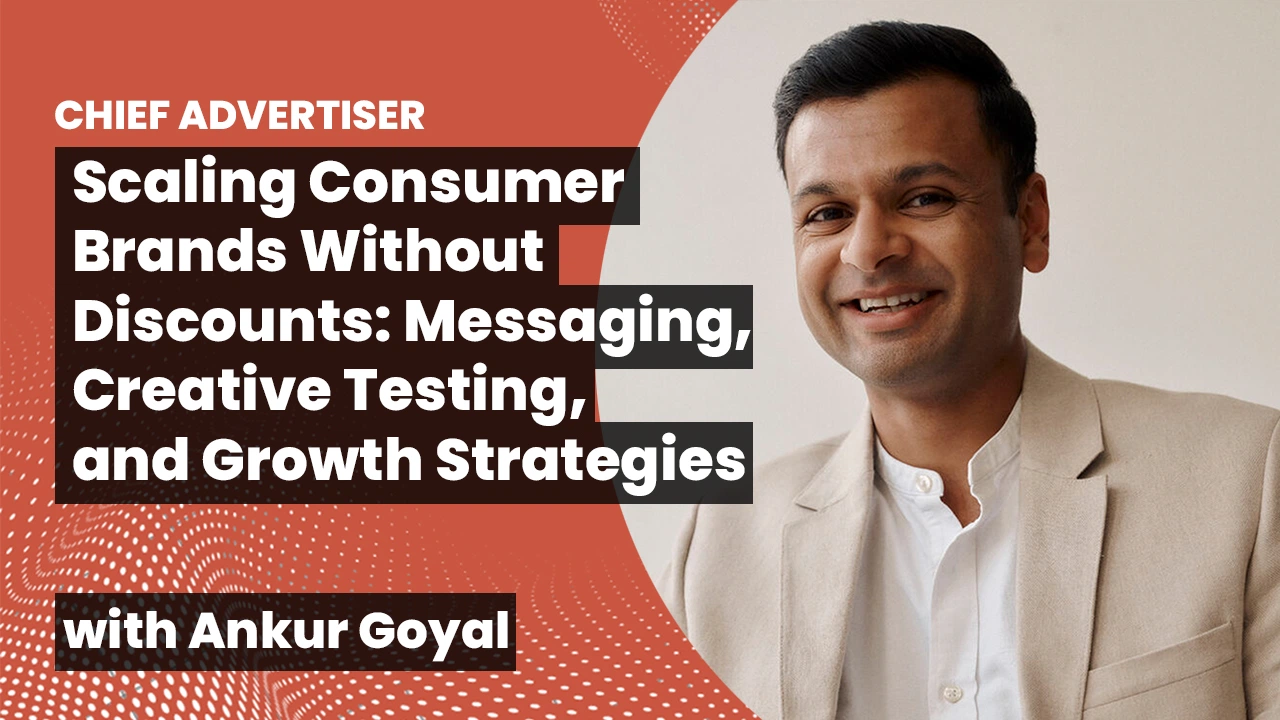Note from QRY: This post is by Amy Huang from Brij, one of our technology partners. QR codes have continued to grow in popularity, and consumers are used to engaging with them. Knowing how and when to use them to improve customer experience is important.
If you’re looking for an example of great advertising, look no further than the Super Bowl commercials. Companies spend millions of dollars for 30 seconds of screen time, and this past February, one cryptocurrency company garnered overwhelming success with its ad featuring a bouncing QR code. With this simple but creative campaign, Coinbase drew over 20 million visits to its website in under one minute.
While QR codes had been used in advertisements before, Coinbase’s campaign success showed how QR codes were a game changer. The bouncing QR code was an easy, accessible way to connect viewers to a digital experience. It was fun, mysterious, and sparked an interest.
For these reasons, QR codes are used in all kinds of advertisements, from magazines and flyers to digital displays and billboards. Brands recognize the power of adding QR codes to their campaigns. By doing so, they’re making advertisements more interactive, accessible, productive…the list goes on.
“QR codes allow advertisers to pivot from traditional content to out-of-home content that actually elevates the consumer’s experience and drives measurable traffic and transactions,” said Peter Bordes, Interim CEO of Alfi, an AI SaaS advertising platform. “The bridge that connects the moment a consumer interacts with an ad to the instant they transfer that experience over to their smartphone is the impression advertisers are actually looking for.”
In this article, we’ll explore the key benefits and best practices of using QR codes in advertising and examples of QR codes in different kinds of advertising.
Let’s dive in.
The benefits of using QR codes in advertising
QR codes are an easy, accessible way to boost brand engagement.
The only thing you need to scan a QR code is a smartphone (most have a QR code reader built into the camera). With 85% of Americans owning a smartphone, QR codes are highly accessible, especially since users don’t need to download an app or manually type in a web address. It only takes a few seconds to connect to an online website via QR codes, and efficiency matters when it comes to grasping consumer attention.
QR codes allow brands to create interactive and informational digital experiences.
With QR codes, brands can engage consumers beyond the limited amount of information on the advertisement itself and direct them to specially-curated content. This allows more ownership over brand identity and the kind of content consumers experience. Brands can encourage consumers to scan by communicating value through calls-to-action (more on below), whether redeeming a discount or joining a rewards program.
QR codes allow you to capture first-party data, track engagement, and measure campaign success.
One powerful feature of QR codes is the ability to capture important analytics, including first-party data, that provide insight into campaign success. This is critical for brands advertising in multiple channels, from traditional advertising such as newspapers and billboards to digital advertising. Placing QR codes on advertisements allows brands to analyze individual channel performance and how users engage with advertisements across different channels.
Innovate ways of using QR codes in advertising
(Digital) Out Of Home Advertising
OOH advertising are campaigns located outside of the consumer’s home, including everything from billboards to vehicle wraps and transit posters. A newer form of OOH is digital out of home (DOOH), such as kiosks and digital displays, that comes with useful features such as updating content to suit target audiences and shorter setup time. Both OOH and DOOH advertising are powerful because they are highly visible in high-traffic locations.
Adding QR codes increases the accessibility of OOH and DOOH campaigns and allows brands to send consumers directly to their webpage. According to global research from Alfi, more than two out of three (68%) senior executives expect the use of QR codes in DOOH to increase by 20% or more in the next 12 months.
Example: RISE Brewing Co.
RISE Coffee pairs their QR codes with a compelling call to action (Unleash your roar) and discount incentive to influence buyer intent and increase scans.

Print Advertising
People often come across new products in magazines and newspapers, with QR codes on the same page, consumers can easily learn more and purchase on the spot. By providing incentives such as exclusive offers, brands can tap into the massive reader base and attract interested consumers.
Example: Klarna x Cosmopolitan Magazine
Klarna, a leading buy-now-pay-later provider, partnered with Cosmopolitan Magazine to create the first instantly shoppable holiday issue for the magazine’s more than 72 million readers. Scanning the QR codes, which appear throughout the issue, allows readers to browse and shop in the Klarna app.

TV Advertising
As Coinbase’s ad campaign demonstrates, leveraging QR codes in TV advertisements is extremely effective. Even without the SuperBowl’s extensive audience and popularity, brands can still capture viewers’ attention with QR codes. After all, viewers watch TV with their smartphones nearby and can readily scan an on-screen QR code.
Example: Hulu’s ad unit GatewayGo
To enhance the ad experience for viewers, Hulu rolled out a new ad unit called GatewayGo. Whenever viewers see a GatewayGo ad, they have the option to learn more via email or QR code. The goal was to give viewers “a simple way to engage with brands and take action on their mobile device.”

Best Practices for using QR codes in advertising
Build trust with consumers by using secure QR codes
Potential security risks with QR codes, such as phishing attacks, can be avoided with user awareness and secure technology. With Brij, brands can deploy QR codes safely knowing that each QR code links to content that is sanctioned by the brand.
Place QR codes in strategic locations
Depending on the product, there are several strategic places that brands can place the QR code. With apparel, for example, the best place is the stitched label.
Pair QR codes with calls-to-action
Part of the seamless QR code experience is telling consumers why they should scan. This is where calls to action come in. Whether it’s to claim a discount, activate a warranty, or join a rewards program, make it clear (and concise) to customers what value scanning the QR code will bring.
Make your advertisements interactive with QR codes
If you want to own customer data and strengthen your advertising, Brij can help you gain insight into your customers across all sales channels. By capturing first-party data with QR codes, you’ll be able to deliver personalized content throughout the customer journey.
If you want to leverage QR codes in your product, start today with Brij. Or chat with our team to learn how Brij can help.





